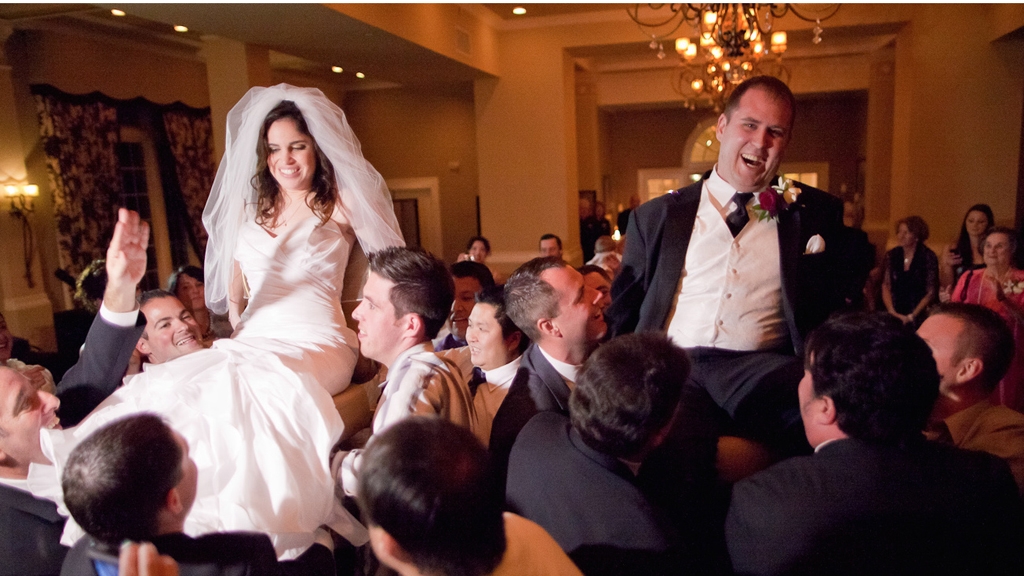Question: I’ve noticed at Jewish weddings you often find people performing silly plays, tricks, and acrobatics for the bride and groom. Where does this custom come from?
–Leah, Chicago
Answer: Hold on a second, Leah, I want to put down these flaming torches I’ve been juggling before I answer.
Phew! Okay, so to help answer your question I contacted Prof. David Golinkin, President of the Schechter Institute for Jewish Studies, and an expert on minhagim, Jewish customs of all kinds. Prof. Golinkin pointed out a number of places in rabbinic literature where we read about performances for brides and grooms on their wedding day. Today we tend to lump all of these antics together and refer to them as shtick, a Yiddish word that means “piece” or “prank.”
The shtick custom, it seems, derives from the Talmud’s mandate to dance and rejoice for a bride on her wedding night. Just what does this entail? The Talmud gives some examples, including Rabbi Shmuel b. Rav Yitzhak who juggled myrtle branches at weddings, and Rabbi Acha, who would hoist the bride up onto his shoulders and carry her around. (Ketubot 17a)
With your help, My Jewish Learning can provide endless opportunities for learning, connection and discovery.
Originally, wedding shtick was intimately tied with dancing and acrobatics. However, as time went on, more and more things became integrated into this custom. According to Israel Abraham’s book, Judaism in the Middle Ages, by the 17th century it was common for plays and skits to be written for weddings, and for wealthy families to hire jesters to perform comic songs and poems for the bride and groom. These jesters performed in addition to the standard musicians, and they wrote unique songs for each couple. In fact, these performers were noted for making their songs so personal that if a bride was an orphan, the jester would sing a song that referenced her deceased parents, bringing a poignant and melancholy note to the festivities.
These jesters–badhanim in Hebrew–still exist, but are rare outside of the Hasidic world. Shtick, though, remains common in Jewish weddings. Besides singing and dancing it can include juggling, silly costumes, magic tricks, fire eating, jumping rope, and more. The goal is to make the happy couple even happier, so feel free to be creative, just like the badhanim of yore!
Hasidic
Pronounced: khah-SID-ik, Origin: Hebrew, a stream within ultra-Orthodox Judaism that grew out of an 18th-century mystical revival movement.
Talmud
Pronounced: TALL-mud, Origin: Hebrew, the set of teachings and commentaries on the Torah that form the basis for Jewish law. Comprised of the Mishnah and the Gemara, it contains the opinions of thousands of rabbis from different periods in Jewish history.
Yitzhak
Pronounced: eetz-KHAHK, Origin: Hebrew, Hebrew name for Isaac.



